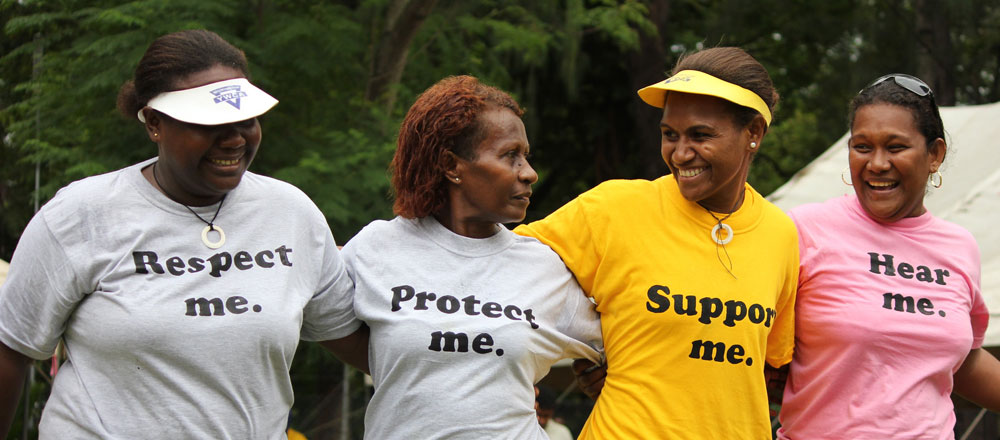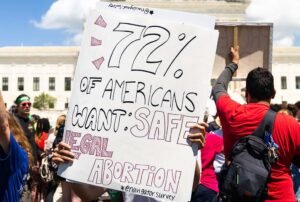
October 8, 2020 New York Times and the Washington Post
The issue of abortion and reproductive rights weighs heavily as the makeup of the Supreme Court shifts to the right. The current administration has been clear in its declarations of only appointing justices who would overturn Roe v. Wade, the 1973 ruling that stated that a woman’s right to abortion was protected under the Constitution. In recent rulings by the Court, we have seen the various ways in which Roe has been chipped away. NPQ wrote about Chief Justice Roberts in standing with the majority to uphold abortion rights, but writing separately, actually gave directions for how states could undermine those rights. And low and behold, Arkansas jumped right in and put in place a litany of laws restricting women’s rights that will, most likely, stand under the ruling in June Medical Services v. Russo. For the reproductive rights community, this may only be the beginning.
Writing in the op-ed section of the Washington Post, Rachel Rebouché, a law professor at Temple University, pointed to what she saw as an immediate threat to reproductive rights and choice for women—access to nonsurgical, medication abortion. The Food and Drug Administration approved this medication 20 years ago but required in-person delivery of the first drug, mifepristone, that precipitates a nonsurgical abortion and is followed by a second drug that is administered by the patient at home. In July 2020, the federal district court in Maryland suspended the in-person requirement, due to COVID-19, allowing that it endangered women and that because so many of the women needing these drugs were essential workers whose exposure should be limited, telemedicine should be adequate and the medication could be mailed or home-delivered. At the time that Rebouché wrote this, the Supreme Court was to rule as to the Maryland’s court suspension of in-person office visits to obtain this medication. She was not optimistic, given the past rulings of this court and the newly vacant seat of Ruth Bader Ginsburg that might soon be occupied by Amy Coney Barrett.
This Supreme Court is something of a roller coaster when it comes to issues of reproductive choice, however. On Thursday, October 8th, they refused to reinstate the federal requirement that women seeking to use medication abortion must pick up a pill in person at a hospital or medical office. Of course, there is a caveat. The Court instructed the trial judge to take a fresh look at the case and rule within 40 days. But for the next forty days, it remains suspended. The ruling, however, was not without its drama. While it came as an unsigned order, Justice Samuel Alito, joined by Justice Clarence Thomas issued a dissent that accused their colleagues of inconsistency in rulings around the pandemic and basically making a decision by not acting. Justice Alito also wrote that the court was restricting religious liberty in not exempting churches and that they had expanded abortion rights in the face of a government safety regulation.
Sign up for our free newsletters
Subscribe to NPQ's newsletters to have our top stories delivered directly to your inbox.
By signing up, you agree to our privacy policy and terms of use, and to receive messages from NPQ and our partners.
If one were to read the tea leaves in this dissent, there is much to be seen. The religious liberty argument, often couched in the language of “sincerely held religious beliefs,” is one that has been and will continue to be made by this court on many fronts, but particularly around reproductive rights. But there is so much more at stake and these arguments undergird a range of reproductive healthcare issues that will be at play and at risk in the courts, both at the district and appellate levels and quite probably at the Supreme Court level as state legislatures and even the federal government seeks ways to restrict and control women’s reproductive health care options.
According to the Guttmacher Institute, some of the reproductive rights areas, beyond that of access to abortion, that are threatened by the shifting philosophy of the courts include contraception, choice of providers, the Affordable Care Act and Medicaid, LGBTQ rights, and immigrant rights. If that takes your breath away, it should. Just looking quickly at these, this year, the Supreme Court weakened the Affordable Care Act’s (ACA) contraceptive guarantee, making it easier for employers and schools to deny insurance coverage for contraception. And there are other cases that would deny birth control, particularly to those receiving health care with federal funds that are moving through the courts. The effort through the Title X Gag Rule to deny funding to Planned Parenthood Clinics has limited a major choice of health care providers for low-income women and women of color in many parts of the country. This effort has placed limits on women who use Medicaid for their health care needs. The November 10th Supreme Court hearing on efforts to totally do away with the ACA looms large for women and their health, especially those who do not have employer-subsidized healthcare. And when one looks at care in the LGBTQ and immigrant communities, issues of healthcare rights loom large, especially for women. The reach of reproductive rights issues into the courts extends far and is not as simple as just one decision on abortion rights.
As the Court’s makeup shifts further to the right, the outcome of these cases will not be surprising, and decisions on abortion, contraception and women’s access to healthcare options will shift from the federal government to the states and to state legislatures. If you’re female, what your health care options are may indeed depend upon where you live.—Carole Levine












